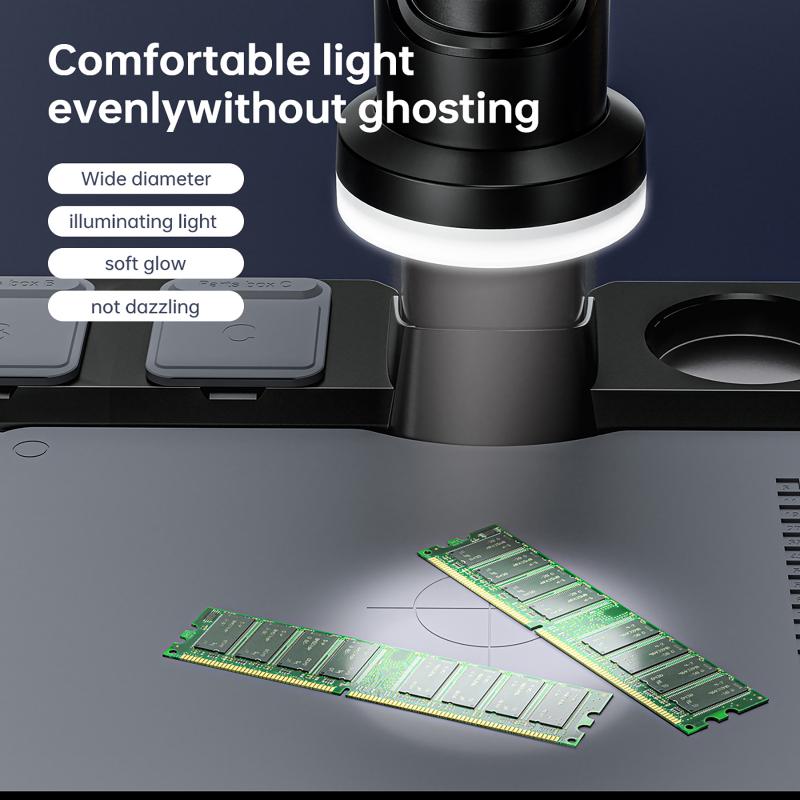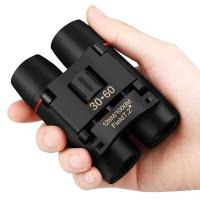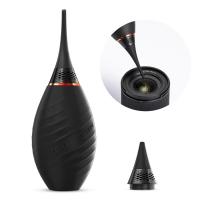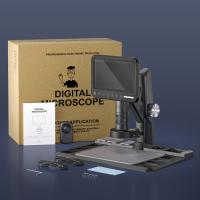How Does The Microscope Work ?
A microscope works by using lenses to magnify small objects that are not visible to the naked eye. Light microscopes, the most common type, use a combination of lenses to focus light onto the specimen. The objective lens collects and magnifies the light that passes through the specimen, and the eyepiece lens further magnifies the image for the viewer. The magnification power of a microscope is determined by the combination of these lenses. Additionally, the microscope may have an adjustable diaphragm to control the amount of light passing through the specimen, and a stage to hold and position the specimen. Some microscopes also use other techniques, such as fluorescence or electron beams, to visualize the specimen in more detail. Overall, the microscope allows scientists and researchers to observe and study tiny structures and organisms that would otherwise be invisible to the human eye.
1、 Optical Microscopy: Utilizes lenses to magnify and observe small objects.
Optical microscopy is a widely used technique that allows scientists and researchers to observe and study small objects that are not visible to the naked eye. The basic principle behind how a microscope works is the use of lenses to magnify the image of the object being observed.
In an optical microscope, light passes through the object being observed and is then collected by the objective lens. The objective lens focuses the light onto the specimen, creating a magnified image. This image is further magnified by the eyepiece lens, which allows the observer to see the object in greater detail.
The magnification power of a microscope is determined by the combination of the objective lens and the eyepiece lens. The objective lens is usually equipped with multiple lenses of different magnification powers, allowing the user to switch between different levels of magnification.
In recent years, there have been advancements in optical microscopy techniques that have further enhanced the capabilities of microscopes. For example, confocal microscopy uses a laser to scan the specimen point by point, creating a three-dimensional image with high resolution. This technique has revolutionized the field of biological imaging, allowing researchers to study cellular structures and processes in great detail.
Another advancement is the development of super-resolution microscopy techniques, such as stimulated emission depletion (STED) microscopy and structured illumination microscopy (SIM). These techniques surpass the diffraction limit of light, enabling researchers to visualize objects at the nanoscale level.
In conclusion, optical microscopy works by utilizing lenses to magnify and observe small objects. With the latest advancements in microscopy techniques, scientists are now able to explore the microscopic world with unprecedented detail and resolution, opening up new possibilities for research and discovery.

2、 Electron Microscopy: Uses electron beams to visualize ultra-small structures.
The microscope is an essential tool in the field of science, allowing us to observe and study objects that are too small to be seen with the naked eye. There are various types of microscopes, each with its own unique way of magnifying and visualizing objects. One such type is the electron microscope, which utilizes electron beams to visualize ultra-small structures.
Unlike traditional light microscopes that use visible light to illuminate the specimen, electron microscopes use a beam of electrons. These electrons are accelerated to high speeds using an electron gun and focused onto the specimen using electromagnetic lenses. As the electron beam interacts with the specimen, it scatters and produces signals that are detected and converted into an image.
One of the key advantages of electron microscopy is its ability to achieve much higher magnification and resolution compared to light microscopy. This is due to the shorter wavelength of electrons, allowing for greater detail to be observed. Electron microscopes can magnify objects up to millions of times, revealing intricate details of the specimen's structure.
There are two main types of electron microscopes: transmission electron microscopes (TEM) and scanning electron microscopes (SEM). TEMs are used to visualize the internal structure of thin specimens, such as cells or nanoparticles. The electron beam passes through the specimen, and the resulting image is formed by the transmitted electrons. SEMs, on the other hand, are used to examine the surface of specimens. The electron beam scans the specimen, and the resulting image is formed by the scattered electrons.
In recent years, advancements in electron microscopy have further expanded its capabilities. Techniques such as cryo-electron microscopy (cryo-EM) have revolutionized the field, allowing scientists to visualize biological structures at near-atomic resolution. Cryo-EM involves freezing the specimen in a thin layer of ice, preserving its natural state and enabling detailed imaging.
Overall, electron microscopy has become an indispensable tool in various scientific disciplines, including biology, materials science, and nanotechnology. Its ability to visualize ultra-small structures with high magnification and resolution continues to push the boundaries of scientific understanding.
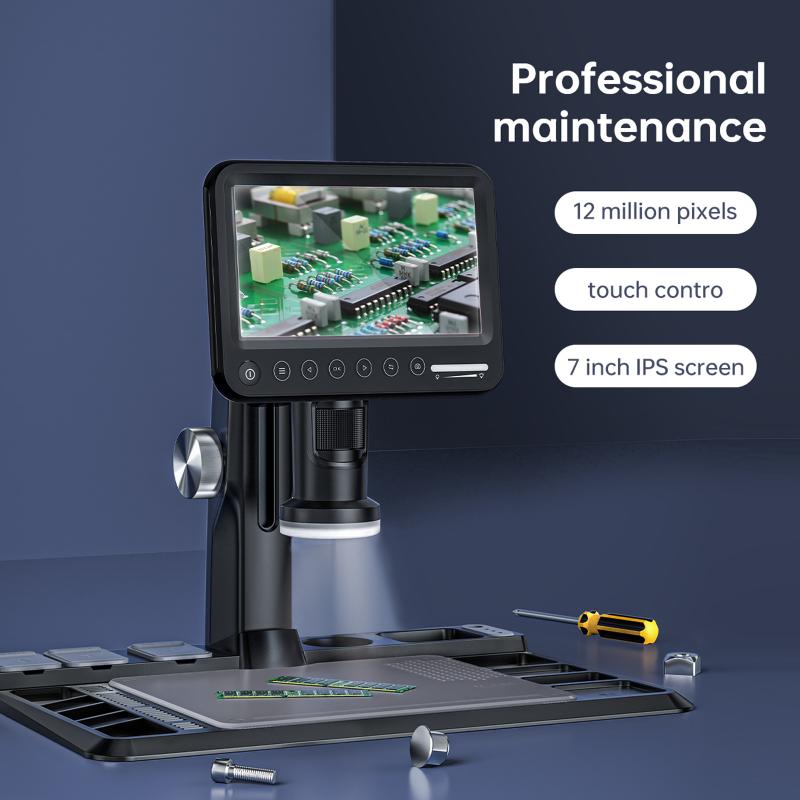
3、 Scanning Probe Microscopy: Measures surface properties using a physical probe.
Scanning Probe Microscopy (SPM) is a powerful technique used to measure surface properties at the nanoscale level. Unlike traditional optical microscopes that rely on light to visualize samples, SPM utilizes a physical probe to interact with the surface of the sample and generate high-resolution images.
The basic principle behind SPM is the scanning of a sharp probe over the sample surface while measuring various properties such as topography, conductivity, magnetism, and chemical composition. The probe, typically a sharp tip made of materials like silicon or diamond, is attached to a cantilever that acts as a tiny spring. As the probe scans the surface, it moves up and down in response to the forces between the tip and the sample.
There are several types of SPM techniques, including Atomic Force Microscopy (AFM), Scanning Tunneling Microscopy (STM), and Magnetic Force Microscopy (MFM). AFM measures the forces between the probe and the sample surface, providing information about the topography and mechanical properties. STM, on the other hand, measures the tunneling current between the probe and the sample, allowing for atomic-scale imaging of conductive surfaces. MFM detects the magnetic forces between the probe and the sample, enabling the visualization of magnetic domains.
The latest advancements in SPM have focused on improving resolution, sensitivity, and speed. For example, researchers have developed new probe materials and designs to enhance imaging capabilities. Additionally, techniques such as dynamic mode AFM and high-speed AFM have been developed to capture dynamic processes in real-time.
Overall, SPM has revolutionized our understanding of materials and biological systems at the nanoscale. Its ability to provide detailed information about surface properties has led to numerous applications in fields such as materials science, nanotechnology, biology, and medicine.
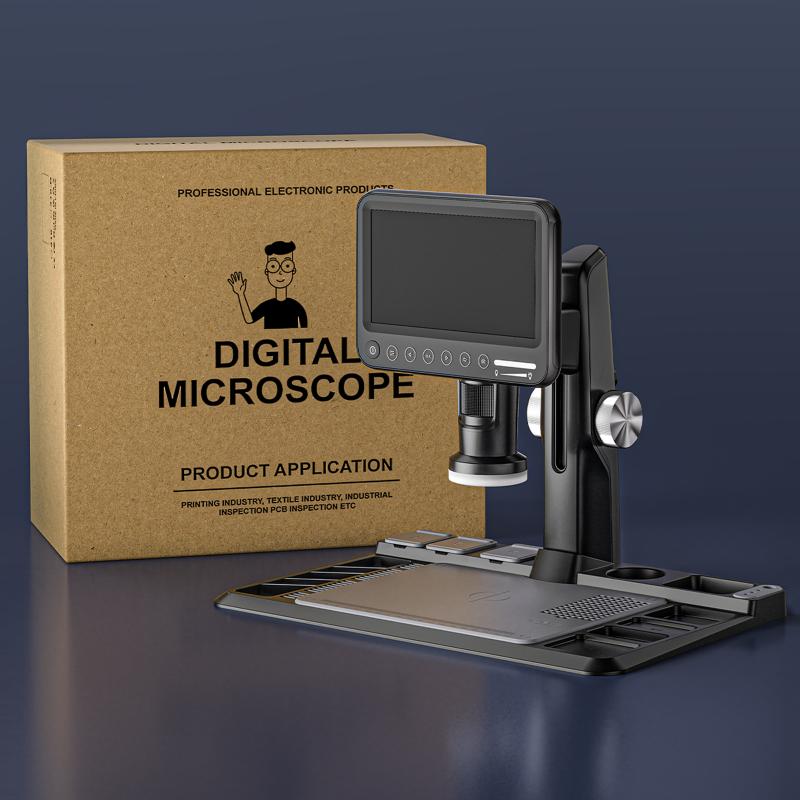
4、 Fluorescence Microscopy: Detects and visualizes fluorescently labeled molecules.
Fluorescence microscopy is a powerful technique used to detect and visualize fluorescently labeled molecules. It is widely used in various fields of research, including biology, medicine, and materials science. The principle behind fluorescence microscopy lies in the ability of certain molecules to absorb light at a specific wavelength and emit light at a longer wavelength.
In a fluorescence microscope, a light source, typically a high-intensity lamp or a laser, is used to excite the fluorescent molecules. The excitation light is directed onto the sample through the objective lens. When the fluorescent molecules absorb the excitation light, they become excited to a higher energy state. This excitation is temporary, and the molecules quickly return to their ground state by emitting light of a longer wavelength, known as fluorescence.
To visualize the fluorescence, a series of optical components are used. A dichroic mirror is placed in the light path to separate the excitation light from the emitted fluorescence. The emitted fluorescence passes through the dichroic mirror and is focused onto the detector, such as a camera or a photomultiplier tube. The detector captures the emitted light and converts it into an electrical signal, which is then processed and displayed as an image on a computer screen.
Fluorescence microscopy offers several advantages over other imaging techniques. It provides high sensitivity and specificity, allowing researchers to selectively label specific molecules or structures of interest. Additionally, fluorescence microscopy can be combined with other imaging modalities, such as confocal microscopy or super-resolution microscopy, to achieve even higher resolution and detailed imaging.
In recent years, advancements in fluorescence microscopy have led to the development of new techniques, such as single-molecule imaging and live-cell imaging. These techniques enable the study of dynamic processes within living cells and have revolutionized our understanding of cellular biology.
Overall, fluorescence microscopy is a versatile and powerful tool that allows researchers to visualize and study fluorescently labeled molecules with high sensitivity and resolution. Its continued advancements and applications hold great promise for further discoveries in various scientific fields.
